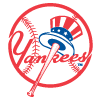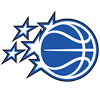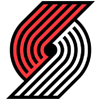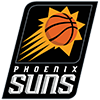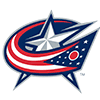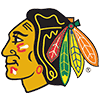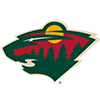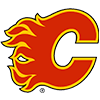We've nearly made it. With just two Mondays left in the season, it looks like this will be the penultimate Barometer of the year. Every year, I like to end the season by taking an objective look at which players rose and fell the most from their preseason draft position. That's still on its way, but this season I'd like to supplement that with a subjective look at the players who have most impressed me all year.
We'll call this the 2021 All-Risers Team. The following players are all going to finish well above their preseason rank at their respective positions, and all have done so in ways that I'm buying into as very sustainable. Many of these guys emerged from obscurity, buried in the reserve rounds, while the rest looked like second- or third-tier options heading into the season but look like top-tier choices now.
I'll be targeting each of these guys heavily next season at somewhere much closer to where they finished this year than where they were drafted. We'll jump right into it since it's a long list, though I'm also interested in hearing from you in the comments about who you'd give your awards to. There will be no Fallers section this week, so apologies to those who were looking for their weekly dose of negativity.
All Risers Team
 Eric Haase, C, Tigers
Eric Haase, C, Tigers
Catcher Average Draft Position (ADP) rank: 85; Catcher Earned Auction Value (EAV) rank: 7
I could have given this spot to Buster
We've nearly made it. With just two Mondays left in the season, it looks like this will be the penultimate Barometer of the year. Every year, I like to end the season by taking an objective look at which players rose and fell the most from their preseason draft position. That's still on its way, but this season I'd like to supplement that with a subjective look at the players who have most impressed me all year.
We'll call this the 2021 All-Risers Team. The following players are all going to finish well above their preseason rank at their respective positions, and all have done so in ways that I'm buying into as very sustainable. Many of these guys emerged from obscurity, buried in the reserve rounds, while the rest looked like second- or third-tier options heading into the season but look like top-tier choices now.
I'll be targeting each of these guys heavily next season at somewhere much closer to where they finished this year than where they were drafted. We'll jump right into it since it's a long list, though I'm also interested in hearing from you in the comments about who you'd give your awards to. There will be no Fallers section this week, so apologies to those who were looking for their weekly dose of negativity.
All Risers Team
 Eric Haase, C, Tigers
Eric Haase, C, Tigers
Catcher Average Draft Position (ADP) rank: 85; Catcher Earned Auction Value (EAV) rank: 7
I could have given this spot to Buster Posey, but Haase's rise from a complete afterthought to a clear top-10 option at the position is even more impressive than Posey's bounceback campaign. I can't say I gave much thought at all to Haase before the season, as he was a 28-year-old who'd never been anything more than organizational depth, producing a -10 wRC+ in a small sample of 53 plate appearances at the highest level. The Tigers didn't seem to think much of him either, as he wasn't even on the 40-man roster until his contract was selected in mid-May. What he's done since then has been remarkable, particularly in the power department, as he's homered 22 times in 339 plate appearances. He's unlikely to ever hit for average, as his .231 mark in that category comes with a 30.7 percent strikeout rate, but the power is very real. His 14.8 percent barrel rate ranks fourth among catchers with at least 300 plate appearances, slotting in right between Yasmani Grandal and Gary Sanchez. He fits the same low-average, high-power profile as that pair and Mike Zunino, and while his defense behind the plate doesn't grade out all that well, his ability to play a passable left field should keep him in the lineup enough to justify a high pick.
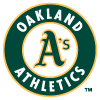 Matt Olson, 1B, Athletics
Matt Olson, 1B, Athletics
First baseman ADP rank: 11; First baseman EAV rank: 2
You could certainly give this spot to Joey Votto, who altered his approach to hit for more power in one of the more exciting late-30s seasons I can remember, but Olson's development in his age-27 season is in many ways even more exciting. Olson had always been a hitter who sacrificed some contact for more power, hitting .245 with a 26.1 percent strikeout rate prior to this season, while averaging 36.4 homers per 600 plate appearances. Those contact issues reached a problematic point last season, when his strikeout rate spiked to 31.4 percent, sending his average crashing to .195. He's rebounded in a big way this season by hitting a career-best .276, an improvement which looks quite sustainable given that he's cut his strikeout rate nearly in half to 15.9 percent. He hasn't sacrificed any power to get there, either, as he's already tied his career high with 36 homers. Now that he's a true contact-power dual threat, he should vault into the top tier of first basemen and deserves consideration not far behind Freddie Freeman in next year's drafts.
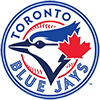 Marcus Semien, 2B, Blue Jays
Marcus Semien, 2B, Blue Jays
Second baseman ADP rank: 15; Second baseman EAV rank: 1
Jonathan India is in the mix here for jumping from a reserve-round pick to a clear fantasy starter, but Semien's jump to becoming a top-five hitter overall is even more deserving. I completely whiffed on Semien this season, as he was a below-average hitter in 2020, as he'd been in the six years prior to his excellent 2019 campaign. That 2019 version of Semien is apparently who he is now, however, albeit with less contact but even more power and speed. I'm guessing I may not be willing to push Semien up quite enough to get him many places next season, as his Statcast numbers cast doubt on the sustainability of his batting average, with his .240 xBA coming in well below his actual .270 mark. Still, a player who hit 40 homers and stole 15 bases (both of which represent career highs) can fall a fair amount and remain an excellent fantasy option. Where he winds up next season will help determine whether he still has a sky-high ceiling, as he's certainly been helped by his leadoff spot in one of the league's best lineups; his 202 combined runs plus RBI lead all non-Blue Jays, trailing only Vladimir Guerrero and Bo Bichette. Even in a less exciting situation, however, he can fall a fair amount and still be one of the best second basemen in the league.
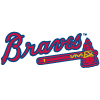 Austin Riley, 3B, Atlanta
Austin Riley, 3B, Atlanta
Third baseman ADP rank: 25; Third baseman EAV rank: 4
Riley seems like the clear top choice here, as the usual suspects make up most of the third-base leaderboard. Riley's season provides an important lesson in not giving up on young players too soon when they don't have much success right away. His .232/.288/.448 line over the previous two years was good for just an 86 wRC+, but that came in the age-22 and age-23 seasons for a player who was considered quite a good prospect. Riley always projected as a power-over-contact hitter, and he took that to an extreme as a rookie, striking out 36.4 percent of the time. He cut that figure to 23.8 percent in last years shortened season and posted a similarly low 24.2 percent strikeout rate this season, so it seems fair to say that he no longer comes with significant contact concerns. That contact improvement seems to be the result of the natural development for a talented young player rather than a significant change in approach, as he hasn't sacrificed any power, producing career highs in barrel rate (12.6 percent) and hard-hit rate (43.9 percent). His .272 xBA suggests his .297 average is a bit of an overachievement, but a .270 hitter with 30-homer power is still a very useful player.
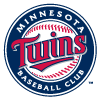 Jorge Polanco, SS, Twins
Jorge Polanco, SS, Twins
Shortstop ADP rank: 27; Shortstop EAV rank: 5
You could make the case for Brandon Crawford or Willy Adames here, or for Marcus Semien if you go elsewhere at second base, but Polanco's sudden power breakout in his age-27 season seems the most significant to me. Polanco's previous best season came back in 2019, when he combined an excellent .295 average with a respectable 22 homers, but he collapsed in last year's shortened season, hitting .258 with just four homers. His average has bounced back about halfway, sitting at .275, but his power surge has been far more impressive, as he already has 31 homers, trailing only Semien and Fernando Tatis among players eligible at the position. That big jump comes with a similarly large improvement in his batted-ball data. He averaged a paltry 3.8 percent barrel rate prior to this season, only once finishing above three percent in that category, but he's jumped all the way up to 10.3 percent this year, the exact same mark posted by Trevor Story and a better mark than Carlos Correa (10.0 percent). He's outperformed that pair this season, and while his shorter track record means he'll likely slip behind them during draft season, he shouldn't be all that far behind.
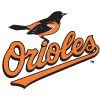 Cedric Mullins, OF, Orioles
Cedric Mullins, OF, Orioles
Outfield ADP rank: 115; Outfield EAV rank: 4
Where did that come from? I couldn't get at all excited for a player who owned a .225/.290/.342 slash line heading into the season, and even Mullins' fans likely saw little more than a player with good speed who could do at least something at the plate. Mullins has been all-around dominant this season, as he's one homer shy of a 30-30 season and could combine that with a .300 average, as he's at .301 heading into the final two weeks of the season. So far in the 21st century, there have only been 13 30-30-.300 seasons, with just two of those (Mookie Betts in 2018 and Christian Yelich in 2019) coming in the last eight years. Some regression is probably coming for Mullins next season, as his batted-ball data suggests he's overperforming in the power department, with his .533 slugging percentage coming in well above his .451 xSLG, but his all-around value means he can fall off a fair amount and still be an incredibly useful player. He can lose 10 homers and still produce numbers that look like a typical season from Starling Marte.
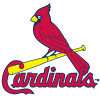 Tyler O'Neill, OF, Cardinals
Tyler O'Neill, OF, Cardinals
Outfield ADP rank: 102; Outfield EAV rank: 17
O'Neill has always had power, but there were legitimate questions about his ability to hit enough to get to it on a regular basis and deserve an everyday role. Heading into this season, he owned a .229 career batting average and a 34.0 percent strikeout rate. He hasn't actually cut his strikeout rate by much this season, as it comes in at 32.2 percent, but his .282 average looks mostly deserved anyway, as his 98th-percentile sprint speed means he should reliably be able to outperform his .271 xBA. It's surprising to see such a solid expected batting average alongside so many whiffs, but O'Neill gets there by simply hitting the crap out of the ball. He ranks seventh in average exit velocity (93.2 mph) and sixth in barrel rate (17.7 percent). Given the size of the Canadian outfielder's biceps, he should continue to hit the ball as hard as anyone in the future, keeping his batting average somewhat safe despite his still-severe contact issues. There's even room for another step forward here if his elite speed starts to translate into more steals, as he's stolen a merely good 13 bases this season.
 Teoscar Hernandez, OF, Blue Jays
Teoscar Hernandez, OF, Blue Jays
Outfield ADP rank: 24; Outfield EAV rank: 2
I considered Adolis Garcia and Jesse Winker for this slot, but they missed out due to the former's second-half collapse and the latter's complete inability to hit lefties. Those issues make me somewhat nervous about that pair next year, but there's little reason for nerves regarding Hernandez. This is already the second straight excellent season for the 28-year-old outfielder, as he hit .289/.340/.579 last year, though drafters were understandably hesitant to fully buy in when that performance came in a 60-game season. He's now been an all-around excellent hitter for 180 games, however, as he's nearly matched last year's performance by hitting .303/.354/.525. His power has dropped off a bit, but his 13.7 percent barrel rate is still quite strong and he's just two homers away from a 30-homer season. His 11 steals aren't an elite mark but give him enough value in that category to satisfy those who want at least some steals from all their early bats. He's on track to finish the season producing first-round value, and while I'm not sure I'll have him quite that high next season, he shouldn't be too far behind.
 Robbie Ray, SP, Blue Jays
Robbie Ray, SP, Blue Jays
Starter ADP rank: 84; Starter EAV rank: 4
I'm somewhat surprised Ray even snuck inside the top 300 in ADP this past offseason, as his 2020 campaign was a disaster in just about every way. You simply can't be a major-league starter with a 17.9 percent walk rate or a 24.3 percent groundball rate, and Ray's 6.62 ERA reflected that. A bounceback even part of the way to his previous form would have been acceptable, but the lefty went on to smash all reasonable expectations and rebounded with a career year. He's always been a high strikeout guy, but his 33.1 percent strikeout rate is a career high. He's combined that with suddenly plus control, as his 6.3 percent walk rate is barely more than half of the 12.3 percent mark he managed over the four previous years. He's also kept the ball on the ground at a respectable 37.5 percent clip. His 2.64 ERA is better than what the ERA estimators indicate it should be, as he's been helped by an unsustainable 90.3 percent strand rate, but an ERA in the low threes seems very possible next year. Given my obsession with high strikeout rates, I expect I'll be very high on Ray next year, though I'm sure I'll face plenty of competition for him.
 Carlos Rodon, SP, White Sox
Carlos Rodon, SP, White Sox
Starter ADP rank: 136; Starter EAV rank: 12
Rodon has always been a talented pitcher, earning a third-overall selection back in 2014 and reaching the majors less than a year later. He's had more than his fair share of injury troubles, however, averaging just 10.3 starts per season from 2017 to 2020, including just nine over the final two years of that stretch. Even when he was healthy, he wasn't anything special, posting a 4.14 ERA through the end of last season, so it's perhaps no surprise that the White Sox non-tendered him last winter only to bring him back on a one-year, $3 million deal. Fantasy players' expectations for him weren't much higher, but he's about to finish the year as a fantasy ace despite the fact he's made just 22 starts. He's backed up his 2.38 ERA with career bests in both strikeout rate (34.9) and walk rate (6.4), with the former number coming in more than 12 points higher than he'd averaged through the end of last season. Durability remains a concern, as he seems to be tiring down the stretch, with his fastball averaging 94.6 mph over his last six starts after sitting at 96.0 mph over his first 16. How he closes the season matters more than it does for any other player on this list, and he'll enter next year with plenty of risk no matter how he finishes, but he's shown the upside to be one of the best pitchers in the league on a per-inning basis.
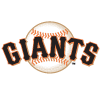 Logan Webb, SP, Giants
Logan Webb, SP, Giants
Starter ADP rank: 131; Starter EAV rank: 25
A pair of trips to the injured list in the first half have limited Webb to 132.1 innings this season, but he's on track to finish as a top-25 starter nonetheless. I expect I'll have him ranked even higher than that next year. His 2.79 ERA is entirely backed up by his 2.77 FIP and 2.76 xFIP, as his combination of underlying numbers is unprecedented. Only 28 pitchers who've thrown at least 130 innings in a season can match his 61.1 percent groundball rate (since the stat began being recorded in 2002). Of those, only Tyson Ross in 2015 and Dallas Keuchel that same year (his Cy Young season) come within even three percentage points of his 26.6 percent strikeout rate. I can't think of a more reliable way for a pitch to be good than by limiting contact and keeping the ball on the ground when he does allow contact. Webb has also shown great control, walking just 6.0 percent of opposing batters. The fact that this all comes after he switched from his four-seamer to his sinker as his primary fastball gives reason to believe his dramatic improvements are sustainable, as does the fact that he pitches in a pitcher-friendly park for an organization that's developed a reputation as one of the smartest around.
RP: Paul Sewald
Reliever ADP rank: N/A; Reliever EAV rank: 19
It's far harder to pick a reliever for this article than it is for any other position, as the fantasy of relievers is so role-dependent. Still, Sewald seems like the clear top choice to me, as he's about to finish as a top-20 option despite saving just eight games after going undrafted in NFBC leagues over the winter. He went undrafted for good reason, as he owned a career 5.50 ERA and didn't even crack the Mariners' 40-man roster until his contract was selected in mid-May. What he's done in just over five months has been remarkable, however. He's cruised to a 2.96 ERA, a number that looks well-deserved given his elite 39.5 percent strikeout rate. That ties Aroldis Chapman and trails just Josh Hader, Craig Kimbrel and Liam Hendriks among qualified relievers. The main knock on his statline is his worryingly low 25.2 percent groundball rate, which could lead to a home-run problem, but that's at least less of an issue in Seattle than it would be elsewhere. Seattle's closer-by-committee approach will keep Sewald from being a top-tier fantasy reliever next season, but he's at minimum established himself as one of the best nonclosing options, and it's not hard to see him finishing next year with 15 to 20 saves even in a committee.














